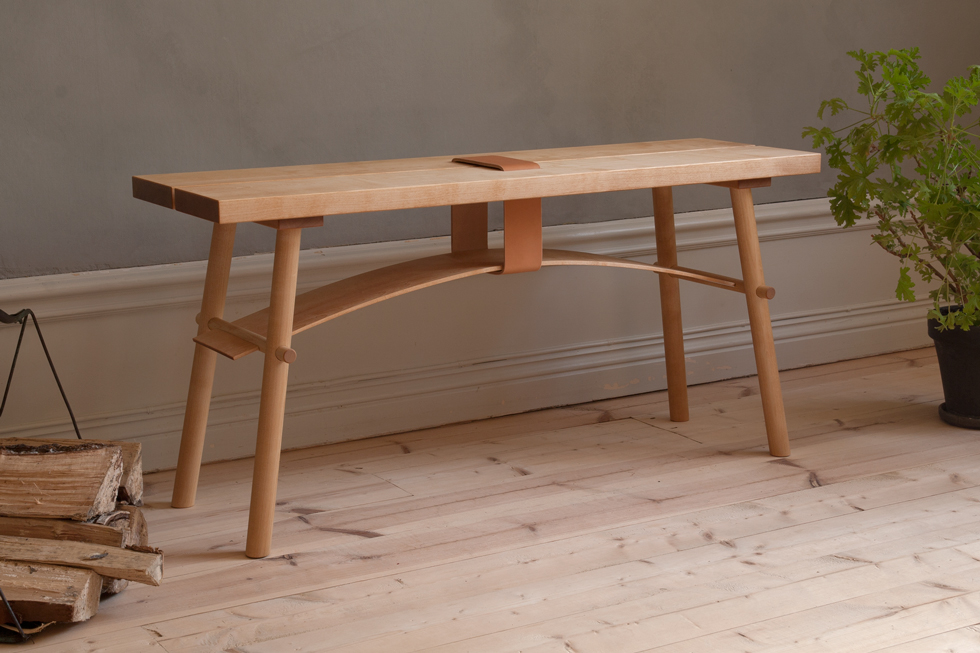
Today we are launching three new products at the Formex-fair in Stockholm! The bench Spring, the candle holder Dawn and the light screen Filter. We hope that you like them! The will be up for sale on the homepage next week!
Spring is divided by a leather strap forming two sitting areas which encourages integration.
The slender, austere design in the frame is challenged by the arch creating a tension both in the construction and the design.
Dawn is a candle holder that in one piece embodies two different states of the same material.
During the manufacturing process the birch wood is ex- posed to heat which causes it to gradually transition into the more heat resistant charcoal. The natural tensions in the wood are also released making every piece unique.
Filter is found in the no-man’s-land between art and product design. With handmade paper every piece is unique and can be used as a light screen your window or a sculptural decoration.
Filter is solely made out of pine. The paper is crafted of the inner bark and the frame is made out of high quality pine wood. In this way Filter becomes a demonstrator of pine as a material and its characteristics.
A new store has opened in a old church in Gustavsberg, Stockholm. It is named Oldschool Hantverk and focuses on Swedish small-scale craftsmanship and environmental considerations. This is a true gem in the archipelago outside of Stockholm. With a far-reaching perspective on materials and manufacturing techniques this store holds a number of classics together with an impressive collection of contemporary design.
The founder, Martina Danielsson, has a background from Carl Malmsten furniture design in Stockholm. We had a quick talk with her where she explained the store and the story behind the store.
What drives you to open this store?
It is more fun to have a clean conscience for all products leaving the store to be used by PEOPLE in their HOME - and that’s my breeding ground for this concept. I believe that a retailer should take responsibility for their products, but the reality isn’t quite there. We should ask ourselves questions like - What are the furniture made of? How are they used and by whom? How long will they last and eventually how should we handle the residue? Contrary to conventional furniture stores with an imported range you see all the amazing artisans over the country struggling to survive. I figured that maybe you could combine the different segments. Artisanal craftmanship is usually locally and sustainable of its nature, the quality is top notch and it has a story. How does your background from Malmsten shine through in your work today? When I think about Malmstens today I see four programs that combined, represent the sustainability reform that we undergo in today’s society. Conservation and Upholstery carefully preserves furniture already made. The cabinet makers and upholsterers stands for high quality and traditional craftsmanship, which is durable and source material efficient. Design has the opportunity to create something new based on the traditional knowledge and expertise available in their network. All together the cooperation brings a sort of pride and humbleness towards the end product. I couldn’t have obtained the quality awareness I have today without going to Malmstens so I am grateful to have taken part of their education. How do you select which products to sell? Our range consists of both new and vintage furniture which is quite unique for a furniture store. We usually look at production and material when selecting vendors and products. It should be made in Sweden, of high quality and have that little extra something. By being selective you will end up with an interesting line of products rather than a ”quantity"-kind of store. Your home slowly comes together by the things you find and collect through life and time. It is the mixture of stories that makes it perfect and that is precisely how I would like to build my shop.
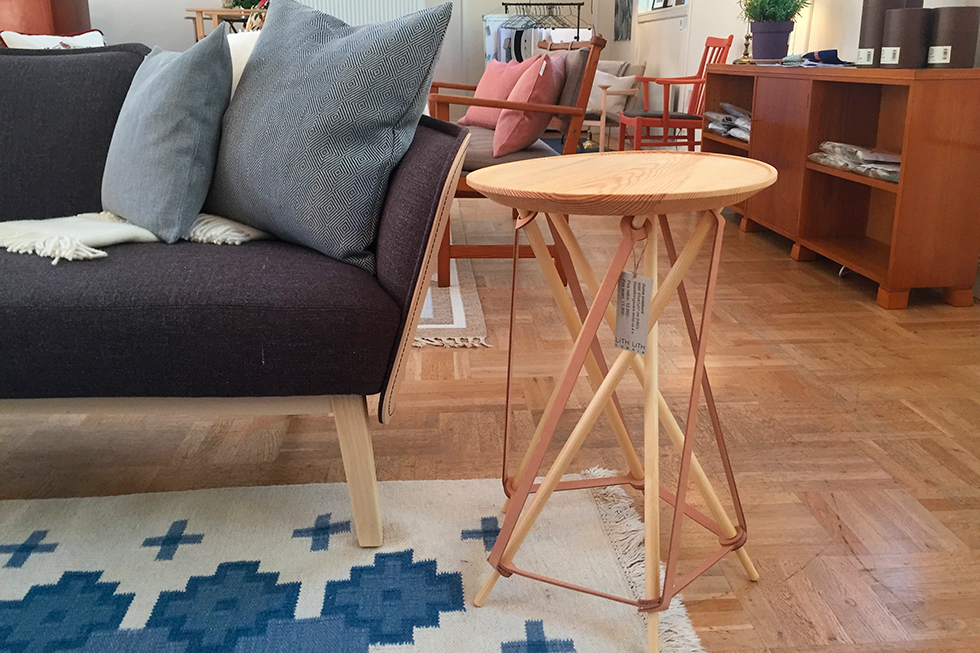
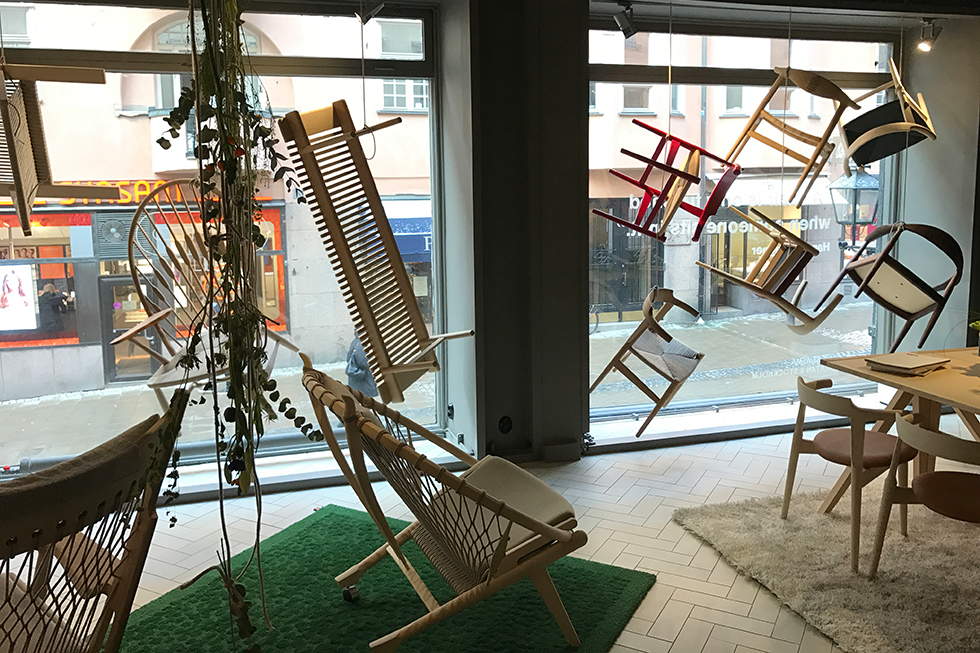
During the Stockholm Furniture and Light fair 2017 a new and very exiting store opened in Stockholm. It is called Austere@thisisalma and it is located in the lobby of the newly opened member office space This is Alma.
The store holds several design classics and also a part of our assortment which we are very proud of. The founder of This is Alma is Fredrik Carlström who also runs the concept store/showroom AUSTERE in Los Angeles where we also are featured.
If you are looking for great design the store is located at Nybrogatan 8 in Stockholm and if you are looking for any type of office in Stockholm, apply to This is Alma.
A couple of weeks age we had a workshop with Ola Hansson from Carl Malmsten school of furniture. The subject was soap and soft soap.
In short soap is made from a compound of fat and alkali. When you add an alkali to a fat it cleaves and separates the fat acids from the glycerin. The fats then unite with the alkali and forms soap.
This was a much more complicated procedure than what we expected and as no one of us had any earlier successful experience this was much like finding your way in I pitch black room.
Soap can be used as a surface treatment for wood and gives the surface a very smooth surface. From soap you can also make a soap lacquer which is something we are very interested in knowing more about so if anyone have any information about this please don’t hesitate to contact me at Martin[a]lithlithlundin.se
Ola came to us well prepared with a compendium of information about the history and the chemistry of soap and a selection of different recipes for making soap. He also brought a variety of different soaps so we had some idea of what to aim for. Skansens byalag (Skansens village community) has a vast experience in soapmaking and we had Siv on speed dial when questions that we could not find the answer to appeared. One of the conclusions from this workshop is that we will apply to one of their soap making courses to get a idea of how this is done. As we tried to work with only natural and locally sourced materials we used old recipies where it became clear that we did not have the previous knowledge needed. For example, one of the recipes said “boil until the soap maker feels that the right color and consistency is reached”.
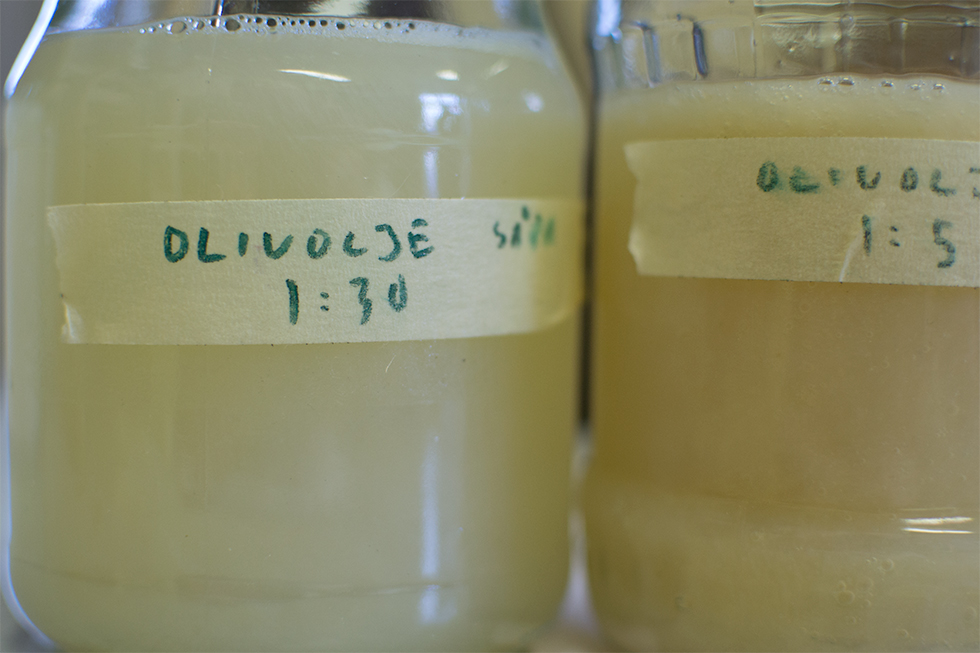
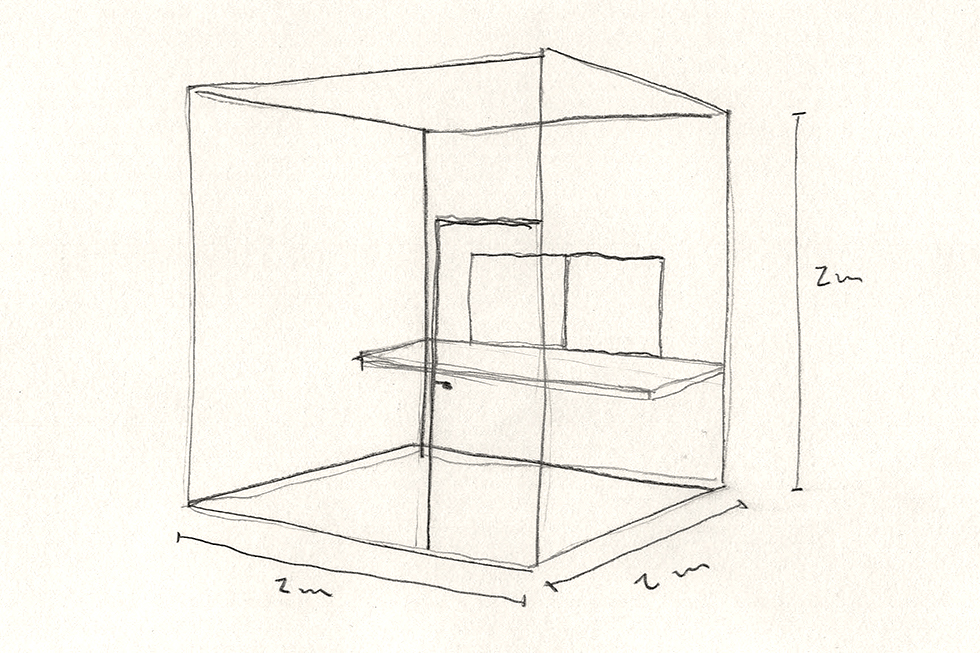
During the last couple of weeks Erik and Martin has been working hard on completing the "clean room" that we started to build ages ago. This to be able to further develop our work with mycelium. Mycelium is the roots of mushroom and we will try to use this as the binder in a construction. As some of you might know we have been working with mycelium before.
It all started out with our intern Sophie Thurner from the University of Applied Science in Dresden who provided us with the idea of using mycelium as the "binder" in a mixture of wooden sticks, sawdust, oatmeal and water. This to be able to "grow" any kind of shape and form and to use it as one of our materials. After the first test we have been putting the project on hold due to the initially quite high investments to get the growing environment as clean as we needed.
We have after this applied to a scholarship through Kulturbryggan and we now have the funds to create the environment and start growing mycelium.
We have gotten a lot of help initially in this project and we would like to take the opportunity to thank Gunilla and AnnaKarin for their work and also Stefan Lysén for all the information and help regarding ventilation and filtration. Right now we are just completing the first batch of sterilizing all the equipment that we will use and also the first batch of mixture that the mycelium will grow in. This is done in a autoclave, a sort of high pressure cooker that steams the content and kills all the bacteria, spores of mold and other possible contamination.
After this we will introduce the mycelium to the mixture and hopefully we will soon see a growth. In our room we have a permanent circulation of air that runs through filters. We also keep the room in a constant over pressure to avoid contamination from possible air coming in from leakages. On the outside of the room we have a dehumidifier and an air filter to avoid humid air filled with mushroom spores to spread in the house. In the room right now we have a temperature of just over 22 degrees Celsius and a humidity of 80% which is just about the environment that oyster mushroom thrives in. As soon as we have some results from this we will share it with you and if you want some more frequent updates please follow us on Instagram @LithLithLundin
As the summer continues we are harvesting our woad. The seeds are turning brown/grey and are now ready to be hung up to dry. We do this to ensure that we are able to grow a bigger area of woad next year to be able to make bigger test of the blue indigo colour. We have been sowing woad for some years now and we have each year been able to collect more seeds to gradually expand our cultivation.
Those of you who follow us on instagram know that we had an intern last weak. Simon is a student at the university of Gävle and is this autumn starting hes senior year as a Industrial Design student. This program is focused on a sustainable future and Simon experimentet with burning fresh wood and he had some really interesting points and ideas.
Last Sunday we where portraited by one of the local newspapers for their summer stories. The text and videos are all in Swedish but you can get a short glimpse of what we are workning on right now and the current mess at our office. Follow this link to read the article "http://www.gd.se/gavleborg/hofors/konceptet-har-tagit-branschen-med-storm-nu-har-torsakers-mobeltrio-nya-projekt-pa-gang"
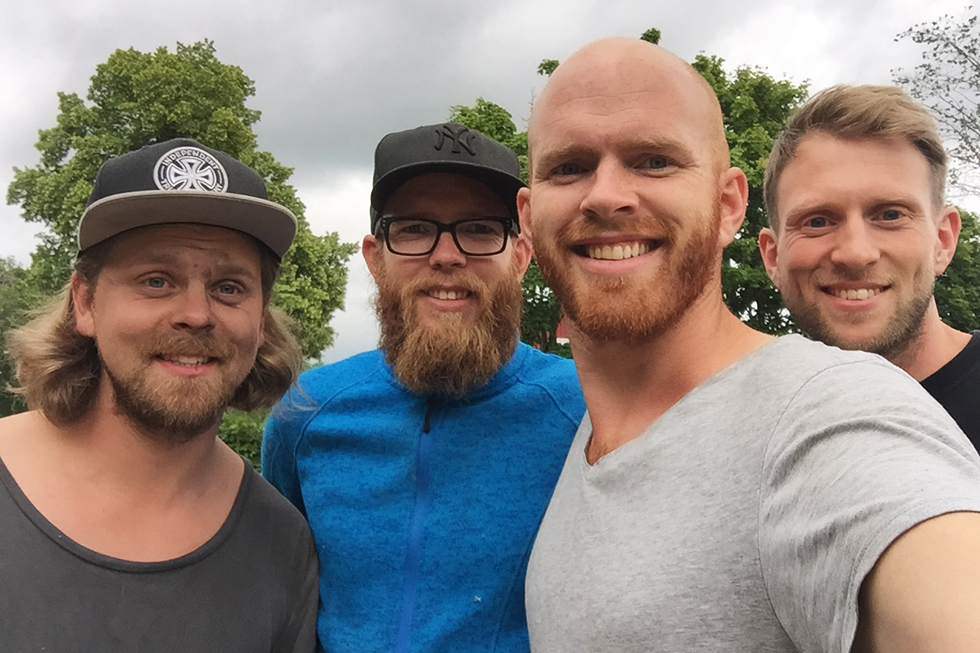
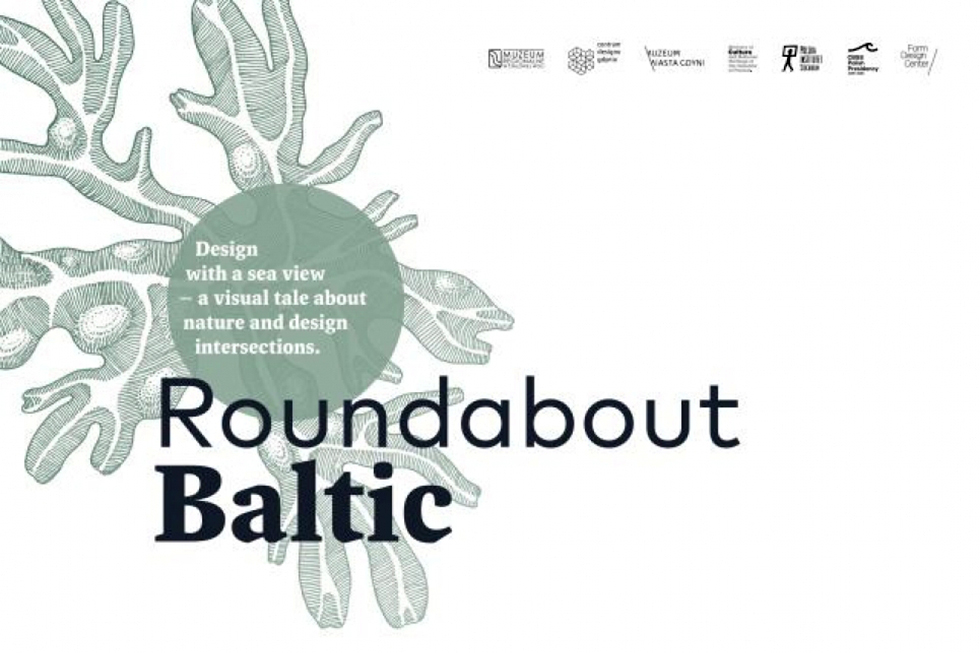
We are taking part in an exhibition that opens tomorrow in Malmö. It’s a visual tale about designs relationship to nature with contemporary design from Poland, Denmark, Estonia, Finland, Lithuania, Latvia, Sweden and Germany, all countries with coast towards the Baltic Sea. The exhibition is held at Form/Design Center, Lilla torg 9 in Malmö. Please visit www.formdesigncenter.com for more information.
The curator is Agnleszka Jaconson-Clelecka and the main organizer is the Regional Museum in Stalowa Wola, Poland.
The exhibition will also be showed at the Estonian Museum of Applied Arts and Design in Tallin from the 8:th of October until the 28:th of December 2016.
Participating exhibitors:
Alicja Patanowska PL, Anki Gneib SE, Anna Bera PL, Anne Lorenz DE, Annike Laigo EE, Audrone Drungilaite LT, Chmara Rosinke PL/AT, Chudy and Grase LT/DE, Com-pa-ny FI, Derelict Furniture EE, Fredrik Paulssen SE, Grynasz Studio PL, Hanna Krueger DE, Jenny Ekdahl SE, Johanna Tammsalau EE, Jonas Edvard DK, Justyna Poplawska PL/DK, Karin Carlander DK, Kosmos Project PL, Lisa Hilland SE, Lith Lith Lundin SE, Lucas Dahlen SE, Maija Puoskari FI, Malafor PL, Mara Skujeniece LV, Mare Klepman EE, Maria Kristofersson SE, Marija Puipaite LT, Meike Harde DE, Mikko Laakkonen FI, Milena Krais DE, Modus Design PL, Monica Förster SE, Olga Bielawska PL/DE, Pia Wustenberg FI/DE, Petra Lilja SE, Raili Keiv EE, Rikke Frost DK, Sampling LV, Sebastian Jansson FI, Silvia Knueppel DE, Silvija Juozelskyte LT, Studio Fem DK, Toivo Raidmets EE, Variant Studio LV, 1+1+1 Nordic Mash-Up SE/FI/IS
The last couple of weeks has been spent on the road and in the workshop. We have been in Dals Långed with a two day workshop on the Wood orientated Furniture Design program.
This workshop started with a lecture about Lith Lith Lundin and the way we work sustainable. The participants then developed their own concepts and investigated materials in their surroundings that lead to very well worked and interesting presentations at the end of the workshop. The Steneby School is located in Dals Långed in Dalsand and is a part of the University of Gothenburg. They have amazing facilities at the school and the physical room for creativity seems just about endless. The participants where interested and hardworking despite having to work with their finals simultaneously. After the workshop ended we joined in on the barbecue that was the end of this term and got to applaud the pupils that got there master degree and the ones that finished the two year program.
When we got back to Torsåker we had the woodworking and wrought program visiting from Västerbergs Folkhögskola in Storvik. This has become an annual visit and it’s always fun to show them what we are up to and discuss materials, sustainability and different assembly techniques. Another thing that we have made is the finishing work on a portal for the Folk Theatre Gävleborg (folkteatern) for their set “ett sjukande skepp / ett växande slott”. The climate, different aspects of sustainability, the future and the past is some of the topics that is covered in the theater.
We also made a short swing-by to greet Kibandu Pello-Esso who is exhibiting his thesis project together with the other graduate student from the industrial design program at högskolan i Gävle. Kibandu has made a thesis with us as a case study on how to market sustainable and green design. It is a very interesting topic and Kibandu has made a great work and we look forward to continuing our discussions with him. Besides that we are currently working on some new test on our linseed oil and we will get back with more information about this as soon as we have some results. One last thing. We have heard from a few people that it sometimes is hard to reach us through email, that the email bounces. If you have sent a mail and still waiting for an answer, please try again or you can always call us.
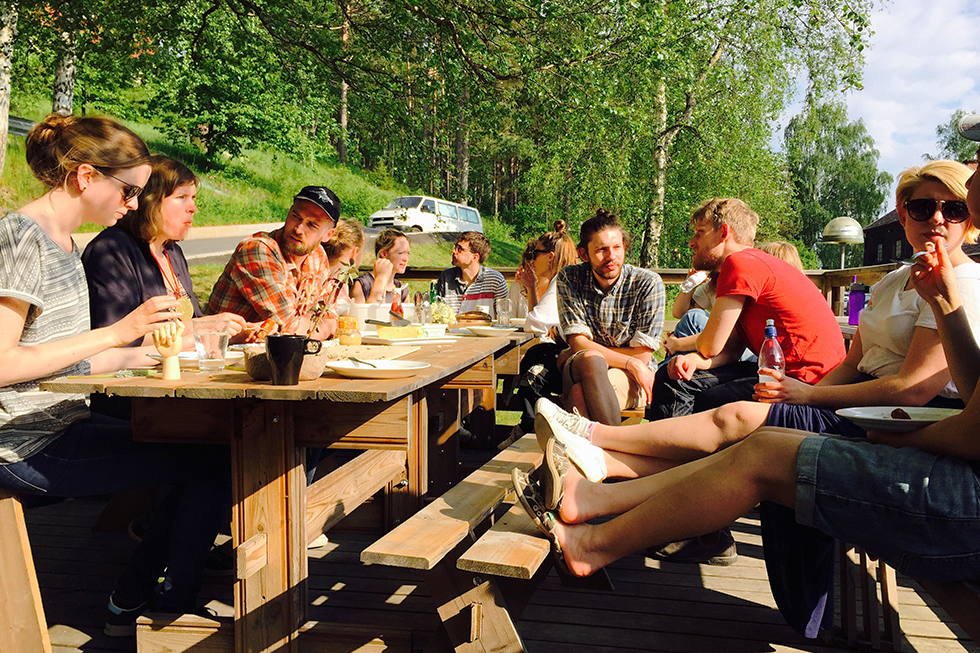
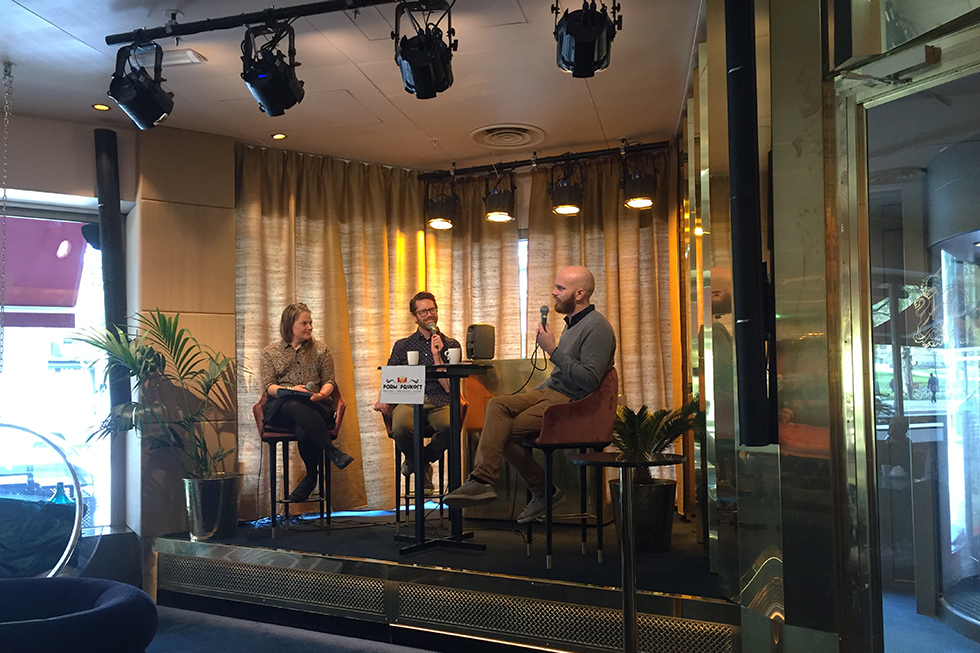
Yesterday we were the guest at Form&Frukost at Scandic Anglais in Stockholm. Form&frukost is a series of conversations about design, crafts and handicrafts. The knowledge of materials, the economics in design and DIY is examples of what the conversations focuses on.
Frida Arnqvist Engström and Stefan Nilsson are founders and moderators and we are very happy to have been invited. This is a very “straight up” style of conversation/interview and it was really fun being a part of this series. For more information about Form&frukost and their upcoming events please visit www.kurbits.nu which is Fridas blog.
If you live in the UK and have an interest in interior design the May edition of today is a must! Not only because it’s a really nice magazine but because of Lith Lith Lundin’s small appearance by our table Dome in there shortlist.
For all who know German a visit to the FOGS-lifestyle website is definitely worth a visit to read the piece about us. For everyone else there is some really nice pictures.
http://www.fogs-lifestyle.com/lith-lith-lundin/
You can always reach us at info@lithlithlundin.se
/Martin, Erik and Hannes
Lith Lith Lundin is constantly working on developing renewable colors. A problem for us is finding pigments that is UV-genuine and don’t bleach in sunlight. For example we developed a nice color using red cabbage but after putting the final tests in sunlight they bleached quite fast.
To find a pigment that is renewable and UV-genuine we have been looking on plant dyeing. As most of this literature is about staining textile fibers the process often includes using heavy metals and toxins as mordants we have to find ways to work around this. One of these ways is hopefully woad that so far has all the color characteristics that we are looking for. This year we are aiming for our biggest sowing of woad (Isatis tinctoria) so far. We hope we will be able to grow woad in the open. We have a small field right by our farm with a slope facing south. Hopefully it will be sunny enough, and we are prepared to spend most of the summer weeding.
>We are also growing transplants of woad inside to ensure that we get seed for years to come. These are sowed in small greenhouses to give them the best possible start and after only a little more than a week they are looking really good.
Our woad from last year is coming along very nice and will hopefully give us more seeds this year.
The blue pigment that comes from woad is the same pigment that you will find in indigo and it’s called Indicum. Historically woad has been a very important and expensive commodity and there are archaeological finds of woad seed in Europe that dates back to about 10 000 BC.
As the Indigo crop has a much higher concentration of the Indicum pigment than woad the European market was shattered when the seaway to India was discovered. Laws and prohibitions was instituted and in 1609 the usage of Indigo led to punishment by death.
The introduction of Indigo to Europe led to reduced domestic cultivation and the growing today is in a very small scale.
The woad root is used as traditional Chinese medicine herb and is used to cool blood and relive sore throat. As the treatments has not been evaluated clinically we don’t really know how it works.
We will use it to try to dye our products blue. This has historically been done in Sweden to color the blue on the Swedish flag and to color the Carolinians (Karolinernas) uniform.
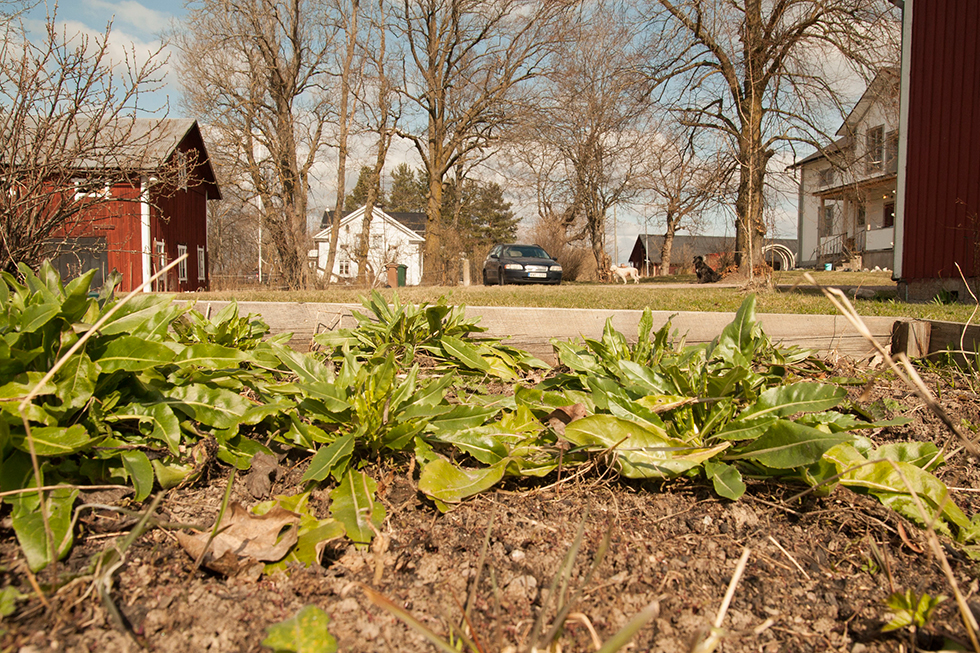
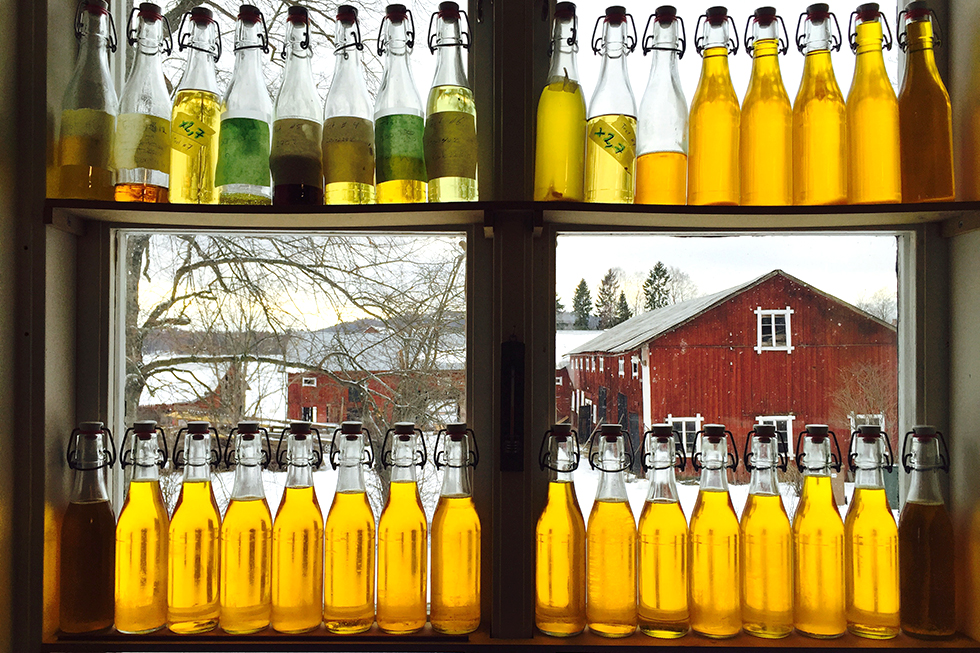
From the start Lith Lith Lundin has been working with linseed oil.
When we did our first inventory of our 50 km radius we were certain that someone within our circle was growing flax. The Gästrikland and Hälsingland countys are considered classic flax ground, Hälsingland in particular, and the landscape flower of Hälsingland is flax.
After some research we could not find anyone that still were growing flax, we heard of someone that had gowned it a couple of years ago and someone that had the machinery for it but had lost interest in it and stopped.
After a good amount of research we came to the conclusion that we had to grow it ourselves.
This as linseed oil would be a key factor in the surface on our products, both as a natural surface and as an ingredient in our stains and colours.
As no one of us had any history in farming we had some practical problems to solve before we could get the seeds in the ground.
What kind of soil do you want to grow flax in?
How do you plow a field?
Would it be possible to fell the birch that is growing in the middle of the plow we found in a grove by our field?
Does anyone know the secret jerk that is needed to start the old tractor in the barn?
After some hassle we got the plow attached to the tractor and the carriage to the field that we had in mind for the flax.
We had some problems getting the plow fixed at a fixed height, it was moving either up or down. This was solved by having both Erik and Hannes in the tractor, Eric driving and Hannes minding the hydraulics to the plow.
Our farming neighbors was enthusiastic spectators and came with some very crucial tips and advices and we can’t really undervalue the help we have got.
Our first linseed field was sowed in May 2013 and after about 40 days we had a field in full blossom.
Flax flowers only blossom for one day so it’s a strong production of new flowers. After blossom it’s another 40 days until it’s time for harvest.
As the seeds should be loose in its capsule before harvest it could be a good idea to wait until you had some nights with frost before harvest, as we did.
Once again we got help from neighbors. Hans and Lasse came with a combine not too big for our field and we got the crops of the field in just about two hours. Usually when you harvest with a combine you use the first lengths to set up the combine’s fans and screens. Our field was too small to be able to do this so we closed the screens and had fans at a minimum. This gave us linseed with a lot of debris in it.
To solve this we have built a small cleaning system for linseeds using fans and screens from old combines and other machines.
After cleaning the linseeds we dried them. Our neighbor’s grain dryer is much too big to be used so we ended up building a machine of our own again.
We used the same fans as in the cleaning machine and got it working quite well.
The video is from us testing the machine in the workshop, still tuning it a bit but you will get the idea of it.
The next step in the process is the pressing. A very kind man in Österfärnbo has a small oil press for flax and he pressed our first harvest.
After pressing we store the oil on bulk for a while to let some of the impurities to sediment.
After a couple of months on bulk storage we bottle the oil and let it sun bleach in one of our windows. This gives the room a fantastic light reflection!
Between the 19:th of February and the 30:th of April we are exhibiting in Stockholm at the Hallwylska Museum.
The exhibition is called "Skönhet för all i nytt ljus" (Beauty for all in a new light) and it explores the design mentality that evolved in the end of the nineteenth century. It focuses on the Swedish branch of the Arts and Crafts movement that flourished in Europe and North America approximately 1880 to 1920. It is an anti-industrial movement that stood for craftsmanship, personality and that the craftsman also should be the designer.
The English textile designer William Morris had a big part in the development of the Arts and Crafts movement and his wallpapers are shown in the exhibition in collaboration with Engelska Tapetmagasinet.
"Skönhet för alla" (Beauty for all) is the title of Ellen Keys book from 1870 that have given name to the exhibition. Ellen was an author and a suffragette. She was convinced that beauty has the power to change and elevate mankind. Light, air and function was her focus and she didn't like the earlier ideas about certain styles in certain rooms. Your house wasn't suppose to be a reception area it was meant to be functional for a family in the everyday life. Our part in the exhibition is as bearer of her thought today and we are exhibiting two pieces of furniture together with an extensive collection of our materials. The collection features some materials that are a part of our furniture today and some that we are currently experimenting with for future use. For more information about the exhibition and the museum in general, please visit http://hallwylskamuseet.se/en
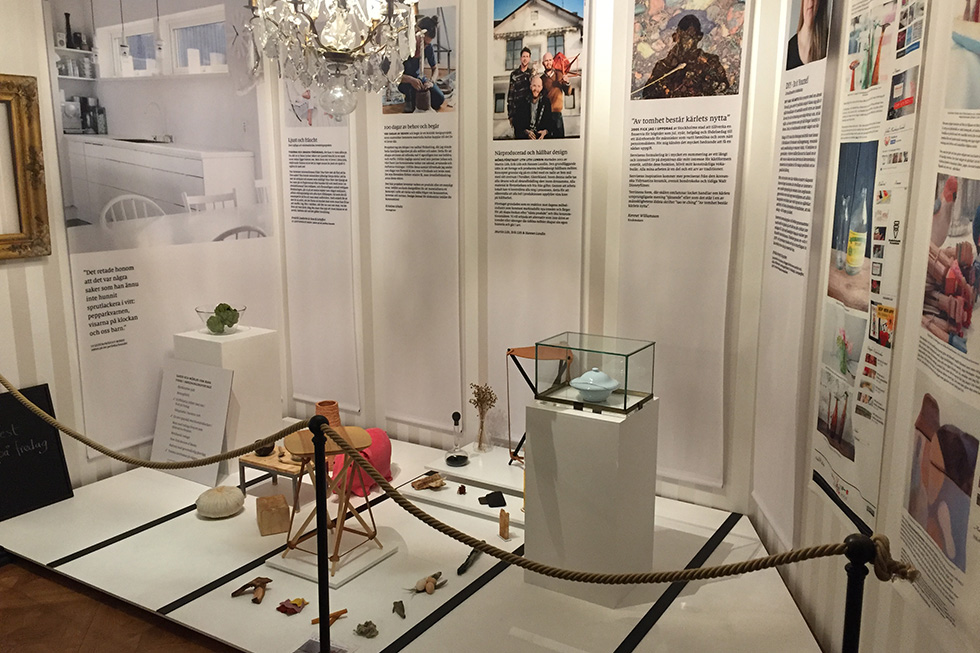
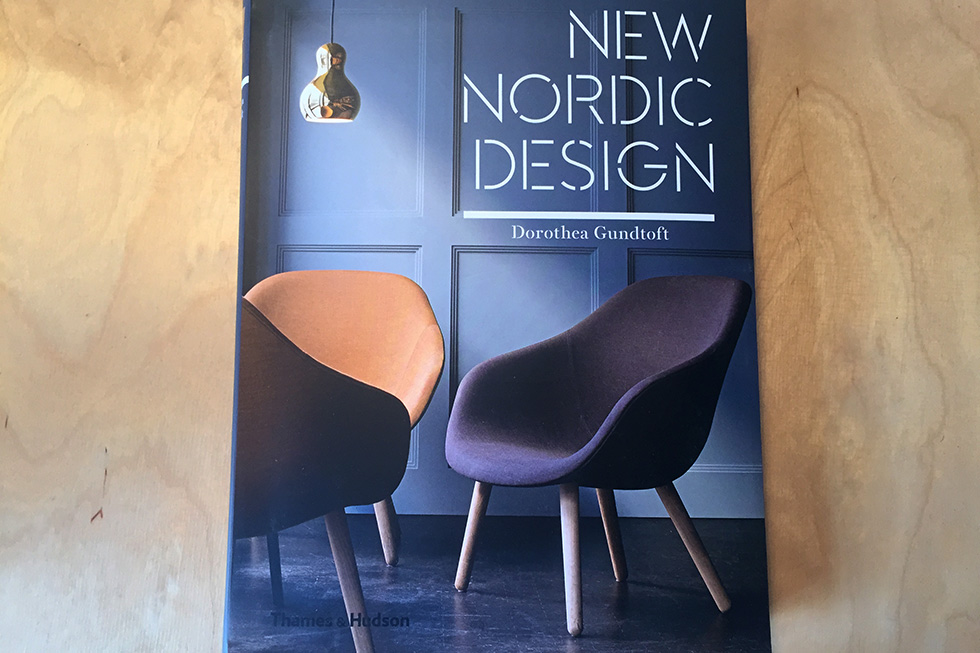
As mentioned before, we are featured in the book "New Nordic Design" by Dorothea Gundtoft.
We would like to share a review of the book and a text about traditional colors and stains.
To read the review, click "here"
To read the text about traditional colours and stains, click "here"
To order the book, please click "here" to go to the Thames and Hudson website.
This year’s edition of Stockholm Furniture Fair was a really interesting one. We spent two days on the fair and two nights in town meeting both old and new friends.
The vernissage at Stockholms Auktionsverk was a success with a very well composed mixture of new design together with some of the most well-known pieces from the 19´th century. The exhibition "Austere at Adlibris Marknad" with its panel discussions on different topics every night was well visited with a stream of visitors throughout the week. If you have the time both exhibitions are open daily and well worth a visit. The winner of our contest during the #2016sdw is instagram user @adnanmakes, congratulations to a beautiful trivet! We recently got featured in a book by Dorothea Gundtoft called “New Nordic Design”. Here is a quote from the description of the book:
“Contemporary Nordic designers are known for their serene, minimal aesthetic and innovative approach to creating pieces of simplistic elegance, from austere lighting designs meant to reflect the quality of light in the northern hemisphere to clean, modern furniture decorating the homes of the region’s most stylish residents.”
To read more and to order this beautiful book, please visit the Thames & Hudson website http://www.thamesandhudsonusa.com/books/new-nordic-design-softcover
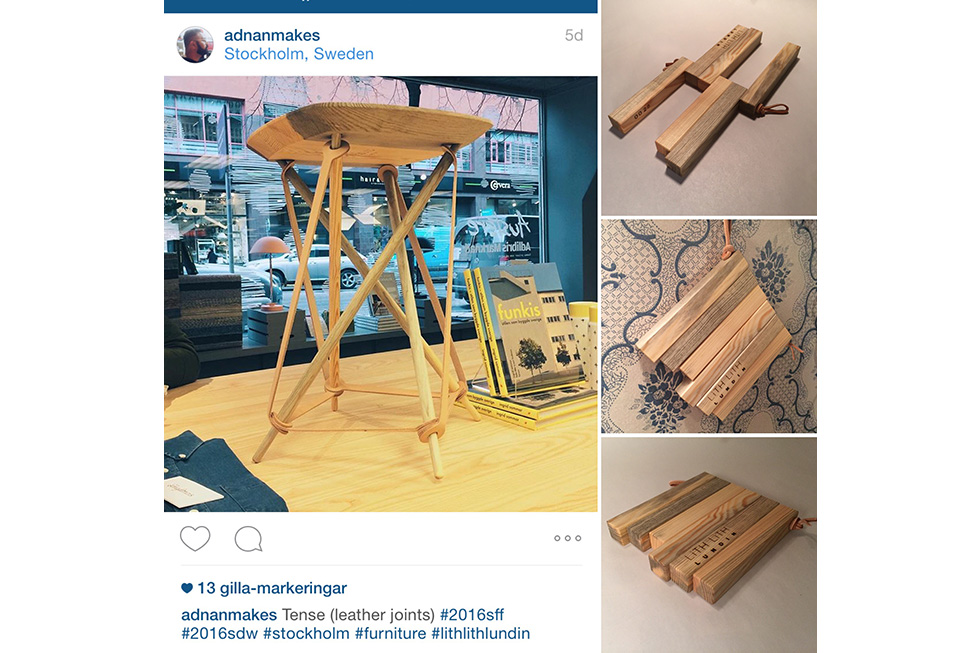
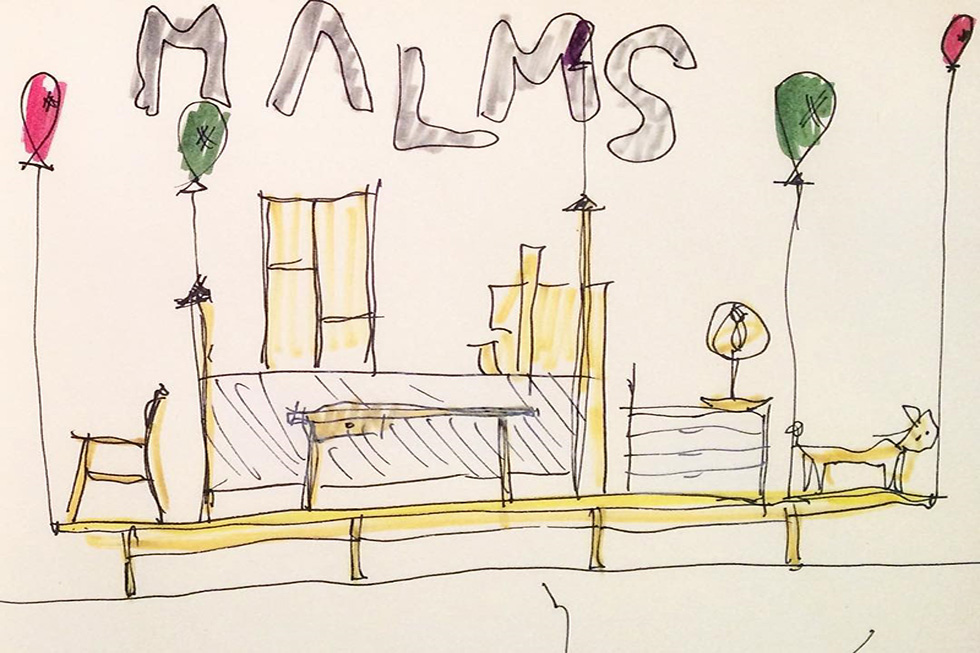
During this year’s edition of Stockholm Furniture Fair we will be participating in two different exhibitions.First we will be a part of “Austere at Stockholm design week” exhibition which is a pop up exhibition at Adlibris Marknad in central Stockholm. Austere is a showroom for Scandinavian design and innovation in Los Angeles. We have been exhibiting our tensegrity furniture there and we are thrilled to launch our latest edition at their pop up exhibition. We are also exhibiting at Stockholms Auktionsverk were we will take part in the Carl Malmsten - timeless crafts area. We hope to see you all out there!
Both exhibitions are open daily during next week, Stockholms Auktionsverk is on Nybrogatan 32 and the Austere exhibition is in the corner of Regeringsgatan and Mäster Samuelsgatan at Adlibris Marknad. We will show a new limited edition of our table Seven that is naturally colored blue. This through a bacteria (blue mold) that grows on and into the wood. The mold often occurs on pine that have been cut down and left in the forest over summer as the bacteria needs warmth and high humidity to thrive. Through a very kind man named Lage we got some logs that are blue from this bacteria. After sawing and drying the logs Hannes is now doing the last bit of sanding before showing it next week.
If you are a retailer who is interested in more information about Lith Lith Lundin, don’t hesitate to contact Martin
This month we are featured in in the german edition of magazines such as GQ and Architectural Digest in an ad for monoqi.com. Monoqi is a well known online retailer for design products and furniture based in Berlin, Germany.
We are very happy to be a part of this campaign and we see it as a really good opportunity to reach a bigger audience.
We are sold through Monoqi this week in a special campaign that ends the 2:e december, a campaign that targets Monoqi’s members.
There is a short interview with martin and some really nice pictures at there blog. to read the interview click [here].
(You might experience problems if trying to open the link in google chrome. Try with an other browser.)
At the moment Hannes is working long hours in the workshop building Dome, Glimm and Seven. Erik is researching and testing our egg oil tempera and we are currently looking further into spray painting. We are also developing a new recipe for our black stain and parallel with this we are working on our beeswax and linseed oil furniture polish. Martin is working with the linseed oil and researching different methods to treat and clean it. It’s long and exiting hours right now!
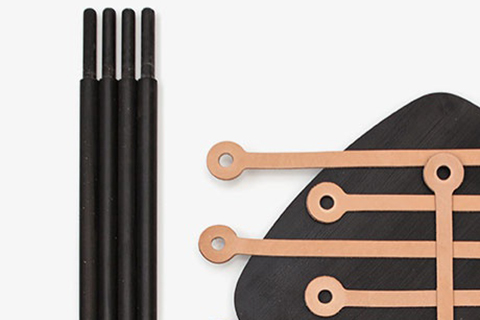
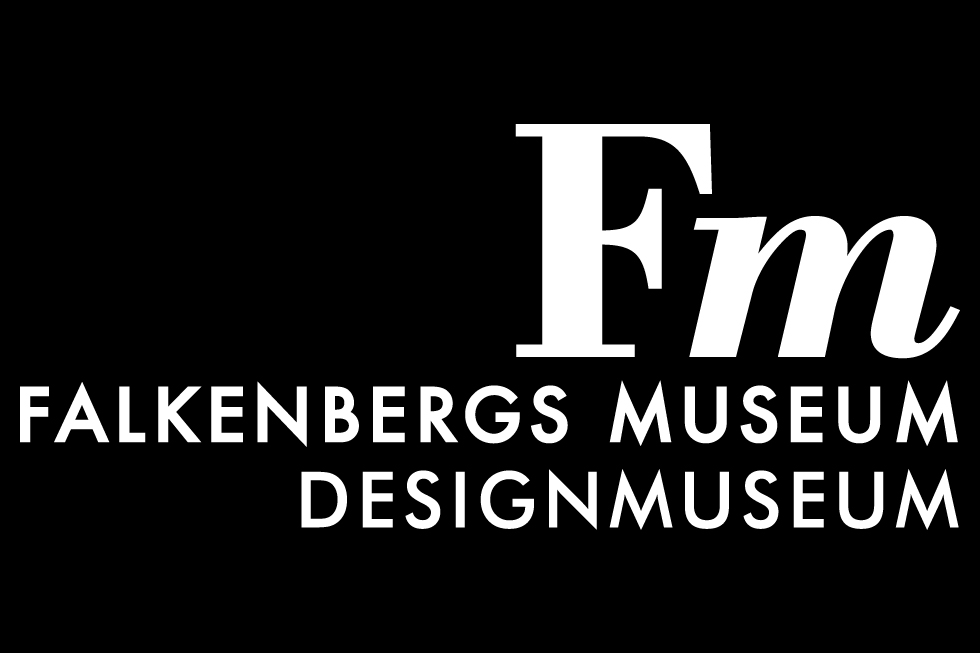
Starting the 20:th september we will be exhibiting at Falkenberg Museum. The museum has a hall called Projektrummet (the project room) where exhibitions with focus on science, process and experiment are in focus.
At Falkenberg Museum we will be showing all our furnitures and many of the materials we use, this to explain our concept and how we work. During this exhibition we will show the results from Sara Olssons thesis project from Gävle Högskola, where she worked with Bois Durci a material were blood is mixed with saw-dust. We were external supervisors in this project and we are bringing some early tests of the material.
At the same time an exhibition called "the future is handmade" is showed at the museum, an exhibition about the handicrafts comback to the design scene.
If you find yourself in Falkenberg sometime between 20 september and 30 november go to the Falkenberg Museum and enjoy the exhibitions!
To visit Falkenbergs museum click HERE
During this years edition of London Design Festival we will be exhibiting at TENT in the Old Truman Brewery on Hanbury Street between 18-21 september.
TENT is a part of the annual TENT and SuperBrands exhibition and during the 2013’s editions they had approximately 33,000 visitors.
This will be the first exhibition we have ever had where we are showing both the tensegrity family, GLIMM, SEVEN and DOME and our latest chair WILL.
It is also the first time for us in England which is very exiting!
If you are in London during this week you know what to do!
For press material please click HERE
